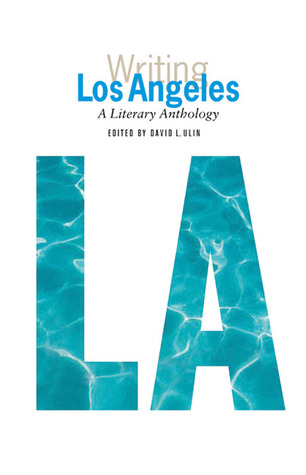Five years ago, the Los Angeles Public Library started a new line of posters, featuring a large picture of a library card, with the slogan “a sign of intelligent life in LA.” Today, the posters are still up, so evidently nobody thought it strange to view their hometown as an intellectual wasteland so vast that even checking out a book sets you on a higher plane. But this sort of thing is unfortunately common in Los Angeles, symptomatic of the city’s persistent feeling of inferiority to the “real cities” back East.
One cause of this civic angst is LA’s long history of literary tourism. Uniquely among America’s major cities, its self-concept has been invented by outsiders, typically from New York or Boston, who come for a few weeks, then leave with notebooks full of their impressions. And their impressions have been largely negative. They invented the LA that most people have heard of: a city with a tragic oversupply of traffic, gangs, mall rats, and monotonously good weather, and a fundamental undersupply of “culture.”
The obvious question is “Why do they do it?” What leads intelligent and tolerant people to create negative stereotypes on the feeblest of evidence? One answer is shock. Easterners (and Europeans) would prefer LA to be San Francisco: somewhat sun-drenched, but full of old, tall buildings located in a central business district, recognizably of the same urban family as Turin and Philadelphia. Los Angeles, however, is uninfluenced by Old World models. Instead of having apartments, it has single-family homes. Instead of having a center, it grows wherever it feels it should. Instead of being the child of the nineteenth century, it is the child of the twentieth. It does not seek a feeling of community, but rather a sense of individual freedom and comfort, the idea behind its car culture. Instead of looking to Europe, Los Angeles is based on ideas transplanted from the frontier: small government, “inexhaustible” land and water, and the individual’s freedom to ignore his neighbor. Most uniformed outsiders’ impressions of Los Angeles stem from a lack of tolerance for these differences, as well as a lack of understanding of what Los Angeles is: not a flawed imitation of an Ur-city (i.e. New York), but rather a radically different approach to what cities should be.
Many of these snide opinions, and a little of almost everything else, find a place in David Ulin’s Writing Los Angeles: A Literary Anthology. The book is an effort to base a collection around a city, rather than a writer or a period. The result is a fascinating introduction to the varied ways in which Los Angeles has been perceived. However, the stylistic variations can be disorienting, as in any book that juxtaposes Evelyn Waugh and Ray Bradbury.
Inevitably, it is the “debate” about Los Angeles that is the book’s main thread. The pieces by the visitors (Umberto Eco, H.L. Mencken, and Octavio Paz, to name a few) are written in language that would describe a visit to Mars. Their titles—“City of Robots” or “The Barbarous Coast”—all emphasize the difference of the city from what is natural, right, and normal. They rarely mince words: Adam Raphael, a correspondent for the Guardian, calls Los Angeles “…the noisiest, smelliest, the most uncomfortable and most uncivilized major city in the United States. In short a stinking sewer.”
LA’s defenders, on the other hand, tend to be a contrary group. David Hockney, after being told, “You’re mad for going there…At least go to San Francisco,” was inspired by Los Angeles’s endless light, revolutionary to a boy raised in the north of England. Others, like wartime German refugees, found LA’s individuality and never-ending good cheer the perfect antidote to the Europe from which they fled.
Confined to their hotels, easterners learn relatively little about LA, and have few facts to buttress their prejudices. Some, like Dutch poet Cees Nooteboom, were so accustomed to traditional city patterns that they tried to explore the city on foot. However, sneering visitors also had the support of the natives. A substantial narrative tradition exists of Angelinos who expose the “dark side” of Los Angeles: racial inequality, water politics, and natural disasters. Mike Davis’s non-fiction City of Quartz is the best example of this style. He portrays Los Angeles as an American Gomorrah— not only without “culture,” but on the point of violent collapse, about to be torn apart by earthquakes and tornados (yes, tornados). His selection is full of adjective-rich phrases like “forty thousand Antelope Valley commuters slither each morning through Soledad Pass on the way to long distance jobs in the smog-shrouded and over developed San Fernando Valley.” Davis’s books have many problems, notably the citing of novels as factual sources. Yet his work still embodies the “conventional wisdom” about Los Angeles for many Eastern intellectuals.
As a showcase of literary greatness, Ulin’s book leaves something to be desired. With the exception of Raymond Chandler, not one of the authors has his best work on display. The native authors are second rate, and the visitors’ works tend to immature polemic. For the most part they are complaining: either about Hollywood (Truman Capote, Aldous Huxley, F. Scott Fitzgerald) or about the city in general (William Faulkner, Bertolt Brecht, Upton Sinclair). But the uneven quality of the book is made up for in depth of focus. Like participants in a gigantic Rashomon, the contributors each provide their own perspective on the city, at times complementing and at times conflicting with each other. The one thing that everyone can agree on is that LA is different: a spontaneous American creation, breaking free from traditions and fostering a new way of life. For those readers rooted in tradition, the result is threatening. To those willing to encounter LA on its own terms, it is strangely seductive.

